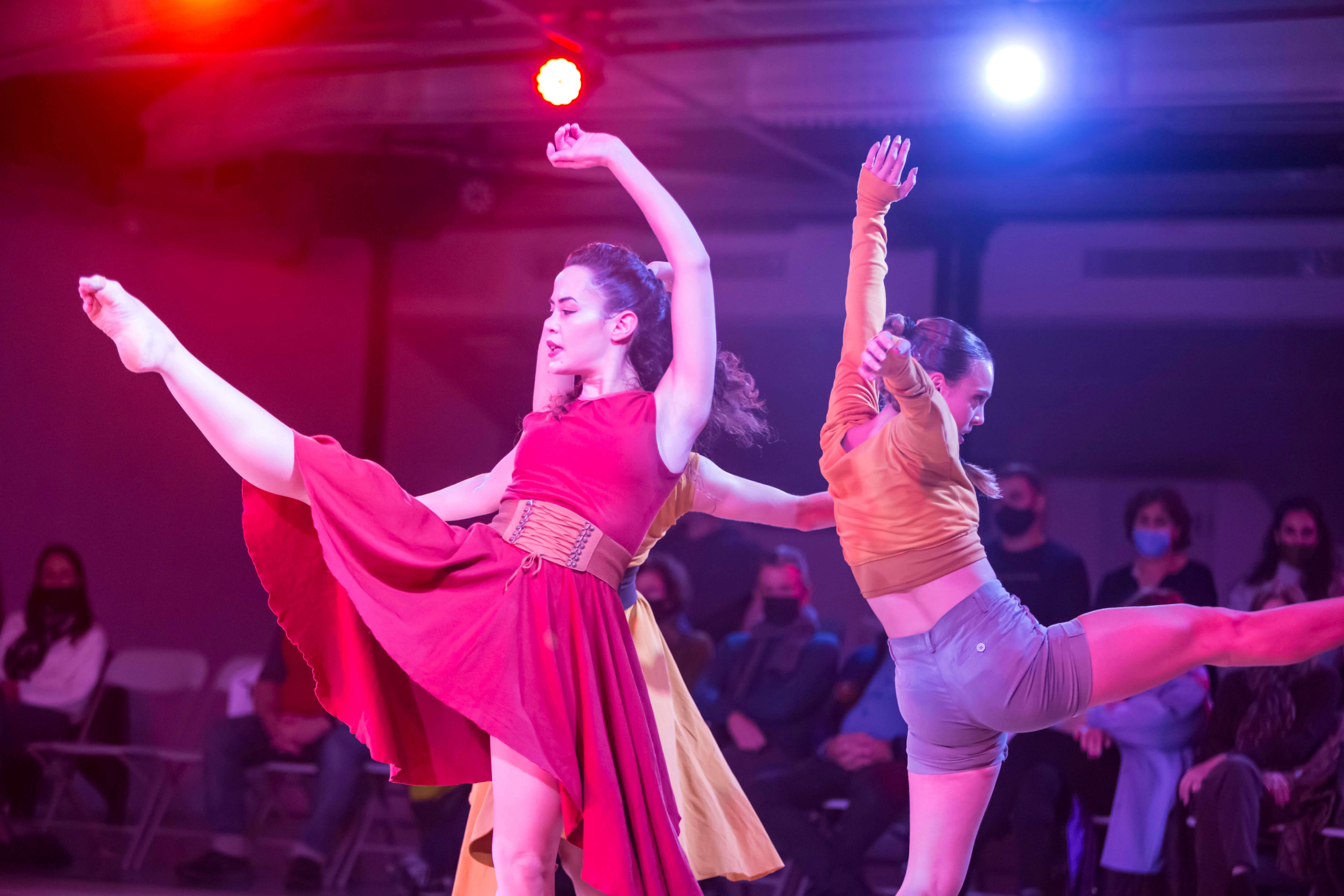Kumzitz by Tamir Ginz
Review
Tal Levin “Haaretz”
“Kumzitz” by Kamea Dance Company is an opportunity to come back to the togetherness / Tal Levin
Perhaps logistical constraints led choreographer Tamir Ginz to put on a show where the audience sits on the sides of the stage / dance floor but it may be first and foremost an artistic choice. After a year of social distance, there seems to be a strong desire to bring the dancers and the audience closer. This requires the abolition of the clear and distinct line between the stage raised above the seats, between what takes place on it in a stormy movement, and those who watch it passively and silently.
This desire will also be evidenced by the name of the new show of Kamea Dance company, “Kumzitz”. The word, as stated in the program, calls for joint sitting in a group. “The thing we have been missing most since the beginning of the pandemic is the opportunity to sit and celebrate together,” Ginz wrote, “to be in good company and feel whole and belong. We have lost this ‘togetherness’. We’re only left with a divide in the nation that has only been exacerbated.”
The desire for this togetherness is evident in all the artistic choices made here, especially a series of circular compositions that include a rhythmic, sweeping movement full of energy. These are woven as a recurring element throughout the evening, to the sounds of Arab, Israeli, Eastern European and even African music. It is not for nothing that the circle is a traditional form of dance, common in various traditions throughout history – the movement includes the elements of a ritual, in which there is a repetitive, dizzying movement that slowly (or quickly) creates ecstasy (or catharsis as Ginz wrote).
On the one hand, it is a closed geometric structure. On the other hand, its use allows for complete disintegration. In “Kumzitz” the circle is a built-in part of the experience and includes both music and fire burning between the occupants. The dancers were able in some cases to reflect this fire, through games with inner circles, closeness and distance from the audience and the use of large fabrics.
“The aim for this togetherness is evident in all the artistic choices made here, including a series of circular compositions that include a rhythmic, sweeping movement full of energy.”
Ginz quotes himself this evening and re-processes excerpts from previous works, “Bamidbar Devarim” and “Menemosyn.” This choice also expresses a longing for the world that was. There may be a desire to reach beyond the current crisis wall and pull parts of it out. Some of the work carries with it a nostalgic code, which is reflected both in the choice of music and as stated in the dance language. There is a mix of folk dances, belly dances, African dances and other tribal dances, which seem to draw the audience to a very material world that emphasizes the ground on which the dancers walk, and from which they get the strength to jump and dance.
The togetherness is also reflected in the audience’s participation in the work. In one part, three dancers, masked with fabric, invite three women to hold the end of their red veil. They perform choreography in which they are held – perhaps like brides on their wedding day (as is customary with some ultra-Orthodox sects), perhaps like prisoners of war or even animals – by the participants from the audience. The choice of a red scarf immediately turns the fabric into both spilled blood and a blood bond. It shows how we and our neighbors are inextricably linked to each other, but this connection bleeds, is wounded and injured, and the movement it allows is never bleeding and wounded in itself. In another scene some dancers hand out small glasses of a drink to the audience, as if it were a glorious feast, watching jubilant dancers in the center. The prostration, too, to the sounds of a song by Static and Ben-El, called for a joint celebration of dance and joy.
Kamea Dance Company usually excels in high technique, a product of the solid base that Ginz brings with him from classical ballet. Here, too, the company tackled not a simple choreography and succeeded well. It is evident that the physical proximity to the dancers made it possible to see even the less clean or perhaps the least intentionally clean places, which matched the parts of the choreography that dealt with tribal, passionate dance, and one that stems from the center of the body and not necessarily driven by tight technique.
In this sense, “Kumzitz” is an interesting experiment, because it breaks down a bit the wonder of the dance created from a combination of artistic means that also includes costumes and sound. Precisely because of the modesty of the studio at the Suzanne Dellal Center and the physical closeness, something of this wonder was somewhat lost. Maybe Ginz wanted to show that there are other types of wonders to discover, primal, more basic, and we need to get back to them before going on stage again.

